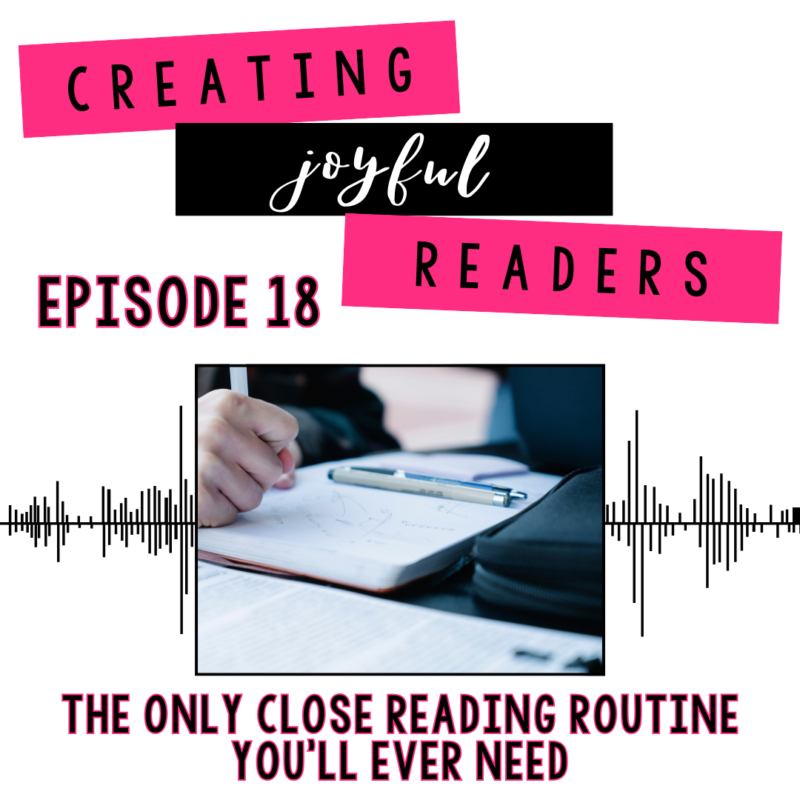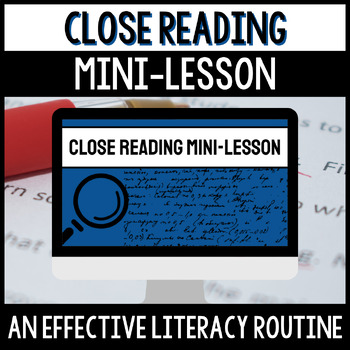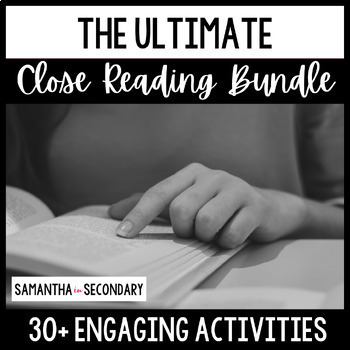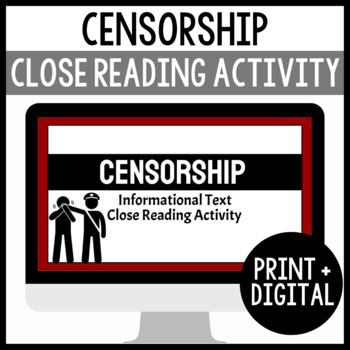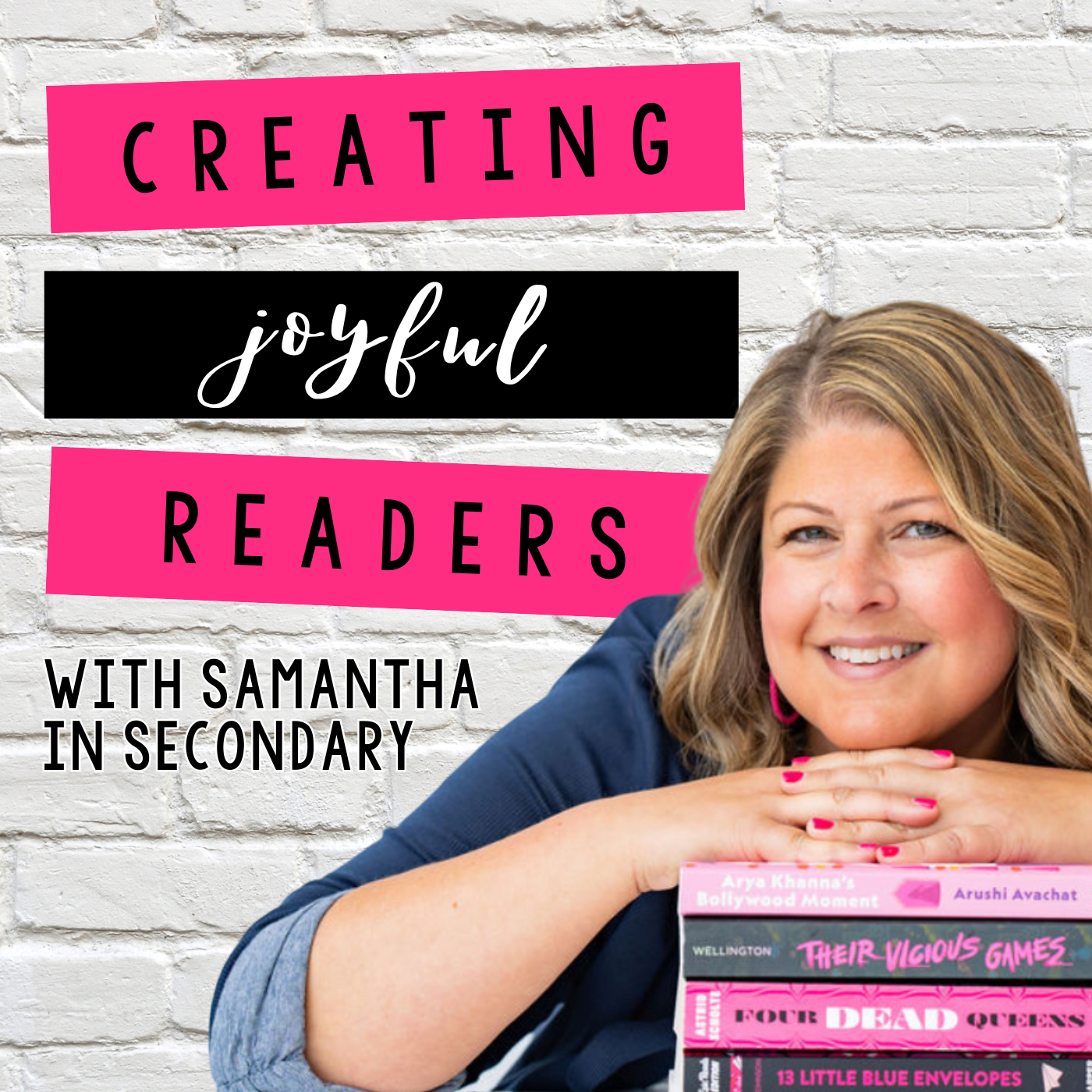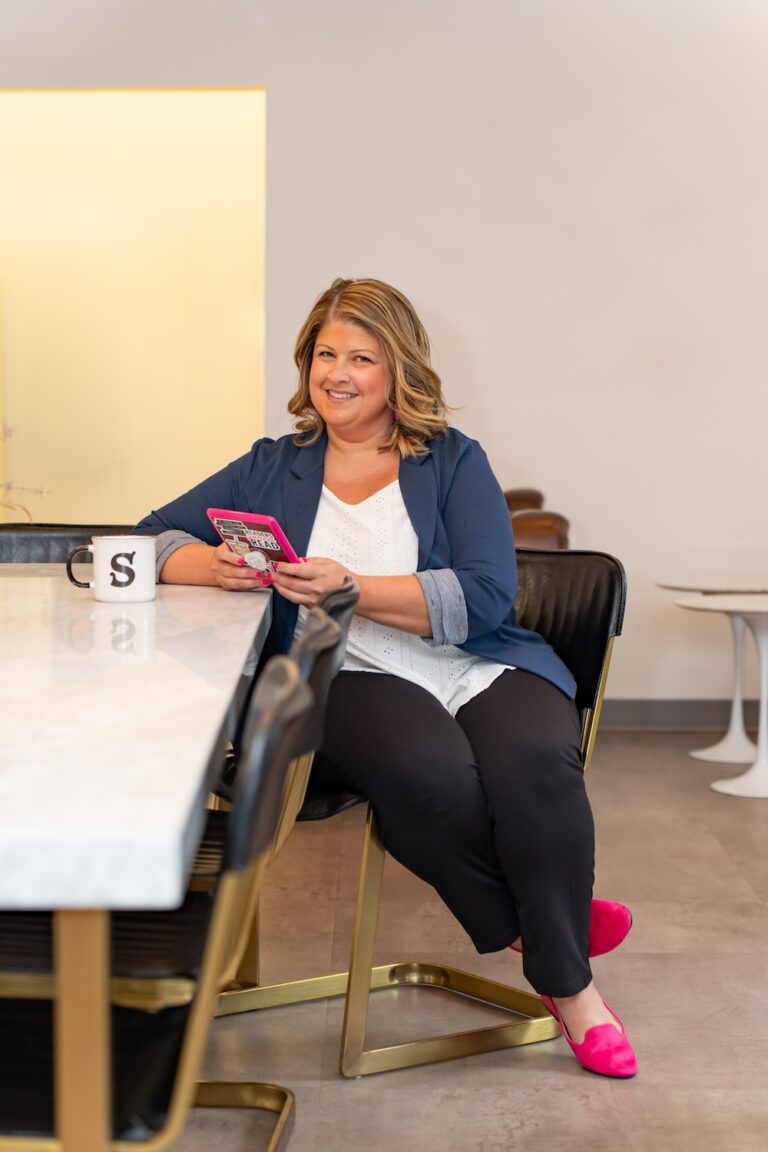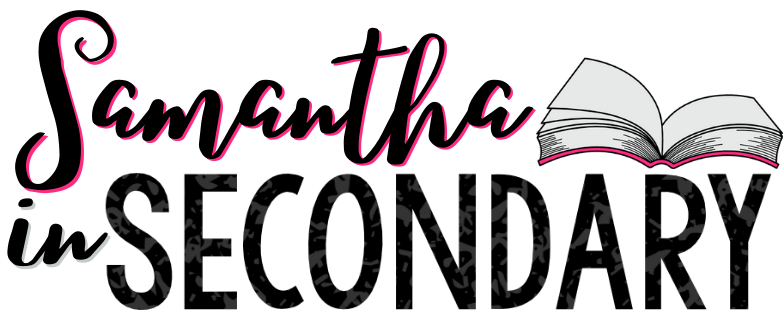Samantha 0:00
I’m your host, Samantha, and today I’m excited to share something I’ve developed and refined over my 15 years in the classroom, my tried and true process for close reading. If you’re an ELA teacher looking for a practical, step by step method to help your students tackle complex texts with confidence, you’re in the right place. Close Reading can feel daunting for students, but I’m here to tell you, it doesn’t have to be. In this episode, I’ll walk you through the process I’ve used successfully for years, and by the end, you’ll have a system you can take straight to your classroom.
Samantha 0:33
Welcome to Creating Joyful Readers, a podcast dedicated to empowering secondary educators with the tools, strategies and inspiration to cultivate a lifelong love of reading in their students. I’m your host, Samantha. Tune in each week as we explore the transformative power of independent reading. Delve into the latest research on literacy, dissect projects that will help your students showcase what they’ve learned in a unique way, and share curated recommendations of young adult novels that will captivate and engage your learners join in as we embark on a journey to create joyful, lifelong readers one book at a time.
Samantha 1:07
So let’s start with the basics. Why does close reading matter? Close reading is all about slowing down and paying attention to details. In a world where so much of what we read is skimmed or consumed quickly, teaching our students to take their time with the text is incredibly valuable. Close reading builds critical thinking skills, teaches students how to analyze writing, and encourages them to make personal connections with what they’re reading. When we model this practice for our students, we give them the tools they need to dig deeper into text, becoming not only stronger readers, but also more thoughtful communicators and thinkers. I break down the why more for you in episode 17, if you haven’t given that a listen yet. What exactly does close reading look like in practice? Well, let’s break it down into my simple three step process.
Samantha 1:53
The first step is the cold read. The first step is easy. It’s all about understanding the story at its most basic level. No annotations, no questions, just reading. I tell my students to approach this first read like a detective stepping onto a crime scene for the first time. They’re there to get a feel for the text, take in the big picture, and start forming a basic understanding of the plot, characters, and setting. Now, I always encourage my students to read with intention, but without stressing over details. During the first pass, it’s their chance to engage with the text on a surface level, no pressure, no deep analysis just yet.
Samantha 2:29
The second read is for annotation. Now here’s where we get into the nitty gritty. During the second read, students actively annotate the text, and I like to give them a structure to follow so they know what they’re looking for. First, they number the paragraphs. This helps them easily reference specific sections later, whether in discussions or in written responses. Next, we underline any words they don’t know and define them in the margins. This helps build vocabulary and ensures they aren’t missing key ideas because of unfamiliar language. As I said in Episode 17, this process is considered a best practice, according to years of reading research. Then they highlight main ideas or important quotes that might serve as evidence. Later, these highlights are gold when it comes time to craft a writing assignment or digging into deeper analysis. Finally, we divide the margins into two columns, left and right. On the left side, we summarize what the author is saying. This could be a brief, one sentence summary of a paragraph or key scene, just to keep track of the basic plot. This is really helpful when students need to go back and reference what happened. On the right side, we explore what the author is doing. Are they describing? Comparing? Arguing? But here’s the catch, it’s not enough to just write comparing. We push for specifics. For example, a better annotation might be comparing Abigail Williams to Elizabeth Proctor in The Crucible. This is also a great time to add rigor if needed. You can have students look for something specific, like figurative language or rhetorical devices. Anything you might want students to look for when diving into the text can be notated using the right side. And my favorite part: encouraging students to ask questions. Anytime they’re confused or curious about something, they jot it down in the margins. This keeps them actively engaged and thinking critically. In my own process, after the cold read and annotations, students also define three vocabulary terms, craft a main idea statemen,t and answer around 10 comprehension questions. These questions always pull from state standards and focus on both literal understanding and deeper analysis. Again, this is a best practice, as we discussed in Episode 17.
Samantha 4:32
Now we’re on to step three, the third read which they engage with the text. By now, students should have a good handle on the text. They’ve read it twice, they’ve annotated and now they’re ready to dive even deeper. This is where I introduce a writing task. The key here is to design questions or assignments that require students to engage with the text, not just regurgitate information. I love using creative prompts that challenge them to back up their answers with textual evidence. For example, I might ask: You could sit down and interview one of the characters from this text. What would you ask and why? Be sure to reference specific scenes or lines in the text to justify your questions. This encourages students to connect with the material on a personal level, but it also demands evidence, and that’s the magic of close reading. It builds the habit of always referring back to the text to support your thinking. Now I know that this all might sound like a lot of steps, but once students are familiar with the process, it becomes second nature, and trust me, the payoff is worth it. I’ve seen students who once struggled to engage with challenging texts suddenly light up with confidence when they’re able to break down a passage, find evidence and make connections to their own lives.
Samantha 5:37
If you’re wondering where to get started, I’ve got you covered. All of my close reading resources in my Teachers Pay Teachers shop, Samantha in Secondary, follow this exact process. I’ve got over 40 close reading passages covering everything from haunted places to influential women, urban legends, true crime, you name it. And for sports lovers, I have over 30 passages covering everything from football players to women’s sports. Close Reading doesn’t have to be boring. It can actually be a way to connect students with topics they’re genuinely interested in.
Samantha 6:07
In this episode, I shared my tried and true close reading process that I developed over 15 years in the classroom. Close reading is all about slowing down, paying attention to details, and helping students tackle complex texts with confidence. I walked you through my step by step approach, starting with a cold read to get a feel for the text, followed by annotating important details in vocabulary, and finally, engaging students with creative writing tasks that require them to use textual evidence. Hopefully, this episode gave you a clear, practical method to bring close reading into your classroom and inspire your students to become more confident readers.
Samantha 6:42
The best way to see how this process works is to try it for yourself. I believe in it so strongly that I’ve got a free resource ready for you to use. It’s on the topic of censorship, and pairs really well with novels like Fahrenheit 451. You can head to my teachers pay teachers shop, Samantha in Secondary and search censorship to find it, or just head to the show notes, and I’ll drop a link for you there.
Samantha 7:01
That’s it for today’s episode of Creating Joyful Readers. Thank you so much for tuning in. If you found this helpful, don’t forget to subscribe so you never miss an episode. Let’s keep creating joyful readers, one close reading at a time, happy reading.
Samantha 7:16
Thanks for tuning in to creating joyful readers. I hope you found inspiration and practical strategies to ignite a passion for reading in your students. Remember every book we introduce and every reading experience we foster can transform lives and help students become lifelong readers. Follow me on social media at Samantha in Secondary for more tips book recommendations and to connect with a community of educators dedicated to making reading a joyful journey until next time happy reading.

